#Nigerian bride
Text

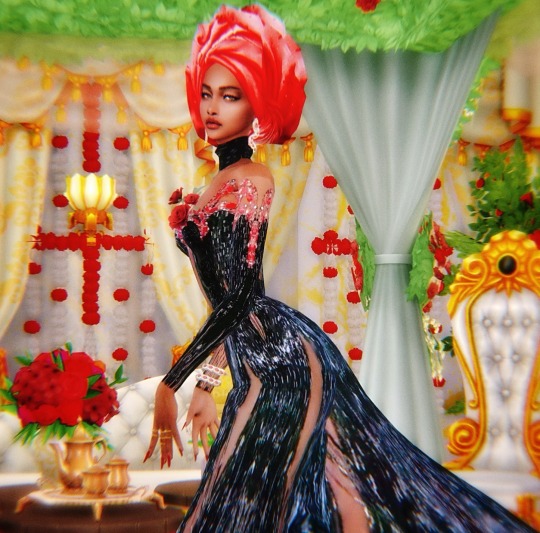



Rexa Ajayi.
“It’s giving Rotimi’s wife.”
—
Headtie - @glorianasims4
Earrings & bracelet - @murphy-sims4
Dress - @mablystore
Poses - @roselipaofficial
#mablystore#murphy sims4#roselipa#glorianasims4#sims#sims 4#sims beauty#supermodelsims#editorial sims#supermodel sims#sims fashion#melanin#nigerian#Nigerian bride#wedding#bridal
14 notes
·
View notes
Photo
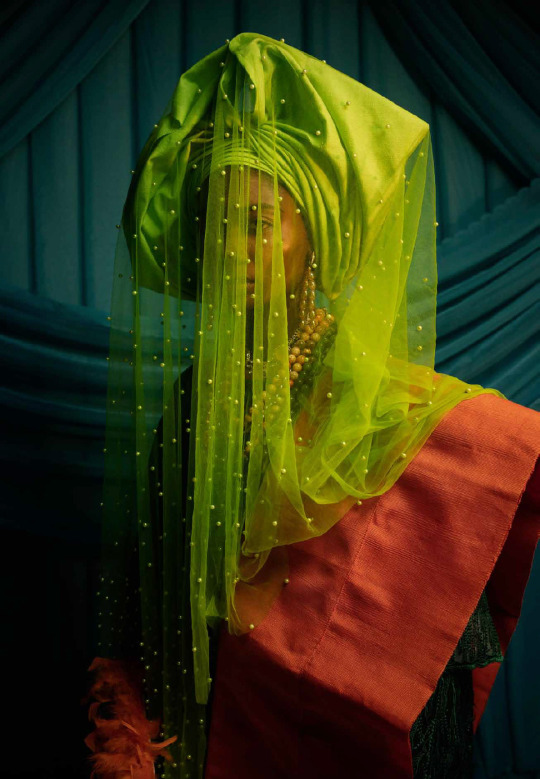
Lakin Ogunbanwo
#lakin ogunbanwo#nigerian bride#niki cryan gallery#portrait#bridal portrait#contemporary tradition#sculptural headdress#e wá wo mi#nigerian photography#nigerian fashion#fashion photography#femme
21 notes
·
View notes
Text
Y'all will never catch me marrying into a boring ass wedding culture y'all already know I'm marrying into an Indian family or Nigerian family. WHAT YALL GONNA DO WHEN YALL AT THE CRAZIEST NON AMERICAN WEDDING IN THE WORLD AND THEN YOU SEE AN ENTIRE MEXICAN AND KOREAN FAMILY TREE WALK IN AND GO APESHIT⁉️⁉️⁉️⁉️⁉️
#they steal his shoes and but gifts in them#or el muertito or el lazo or las arraz matrimoniales#la vibrona de la mar#or the dollar dance#the alcoholism... the music.... the week long celebration....the cookies...the specific dances...the extravagant jewlery and 10 yard gowns..#THE WEDDING PARADES#or in germany they have chainsaws#in india they have... just the indian wedding in general. i love india tbh#the romanian bride being kidnapped or the Korean bride being given a goose#in kenya the father spits on the bride in good luck#OR NIGERIAN WEDDINGS IN GENERAL 💚🤍💚#the korean groom's feet are beaten (with love) and in Jamaican weddings they eat rum cake!!#Jamaican weddings and rum in general#the fiji whale tooth or the Norwegian crowns#armenian bread or the chinese bow and arrow or the greek groom shaving or the Guatemalan bell breaking#NORWEGIAN KRANSEKAKE#the Niger camel dance or the Filipino white doves or Mongolian chicken liver#or french polynesian wedding traditions of STEPPING ON THE FAMILY
2 notes
·
View notes
Text
you ever notice something in historical photos and know you're probably not gonna get an explanation unless an old person tells you
#cipher talk#This one's about Egyptian weddings. A few photos from about the 40s? I've found have brides holding feather fans the same way others hold#Flower bouquets.#I've seen feather fans used in Nigerian weddings too but these look different to that and I doubt they're related#Like it's not impossible but I doubt it? It's not like it's specific to Shuwa in Nigeria afaik or anything
6 notes
·
View notes
Text
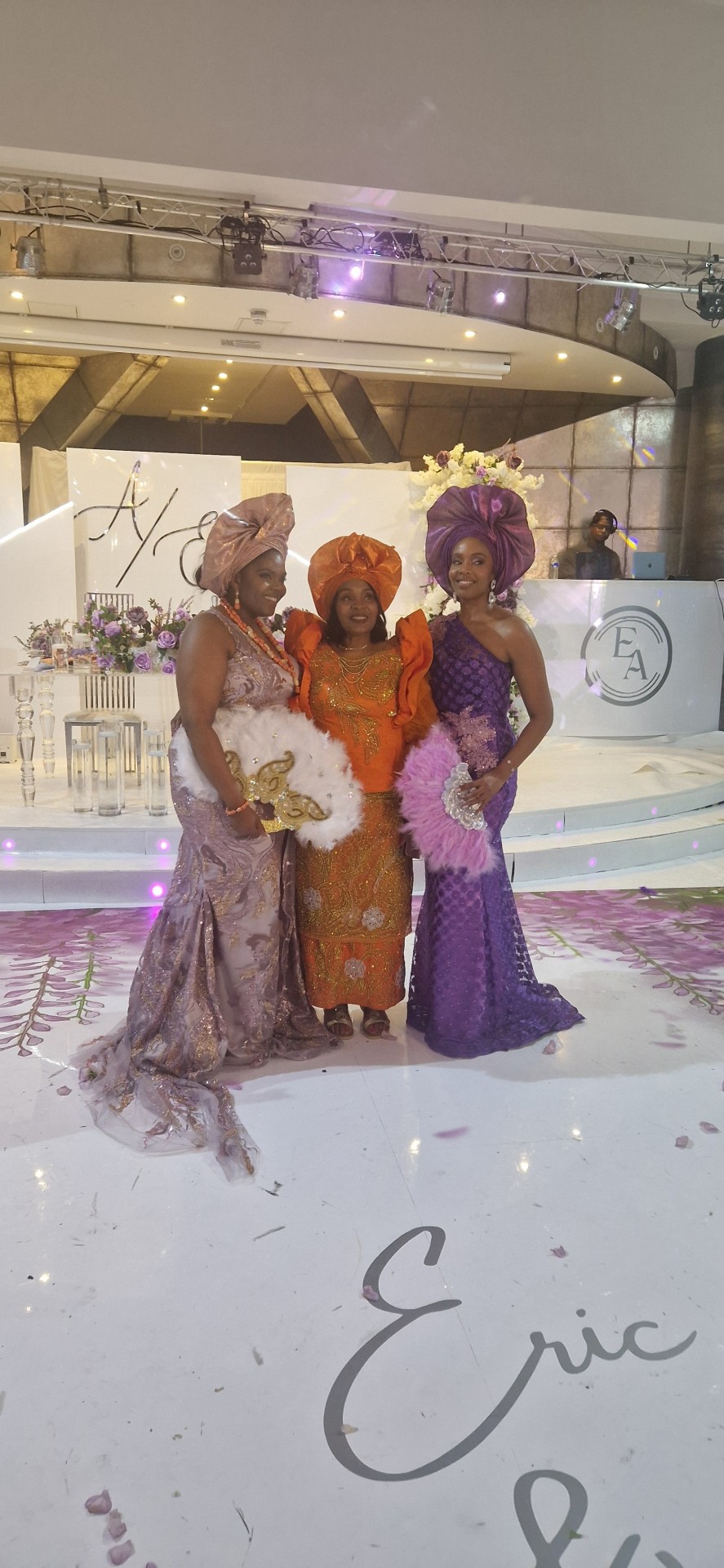
Bride Amanda
Evening attire with a change of makeup look
#rumel makeup#makeup artist#rumelbeauty#londonmua#nigerian wedding#rumelmakeup#brides#bride#bridal makeup
1 note
·
View note
Text
THE BRIDE PRICE & MATTERS ARISING
When TikTok content maker Prescious Ubani published a 5 minute 33 second video skit on detailing an entire list of items a prospective suitor is expected to provide in order to seek the hand in marriage of an Ibo woman from Abia state in south eastern Nigeria, little did she know that an entire movie will be dedicated to expanciating on the intricacies of this matter she hoped to thrash out.…

View On WordPress
0 notes
Link
For brides who #love wedding dresses with bling here is a sparkly #design that you can have customized in any way needed.
Making #bespoke #wedding #dresses from your saved #pinterest #designs is also an option. Just email us your dream #weddingdress #pics for pricing.
Custom #weddingdresses start at $800. Rush orders are possible.
#wedding gowns#wedding dresses#weddings#bridal gowns#bridal dresses#brides#fashion designers#darius cordell#black owned businesses#black girls rock#black brides#black women#nigerian weddings#wedding planners#wedding ideas#wedding designers#designer dresses#designers#frisco texas#dallas texas#dresses#shopping#custom wedding dresses
1 note
·
View note
Text

The Nigerian Brides by Felix d'Eon
#lesbian#wlw#black wlw#black queerness#black lesbian#black love#black women#black art#lgbtqia#gay#lgbt#sapphic#sapphic love#queer pride
788 notes
·
View notes
Text
“My bride price is worth more than 50 million” Erica Nlewedim tells potential suitors
“My bride price is worth more than 50 million” Erica Nlewedim tells potential suitors
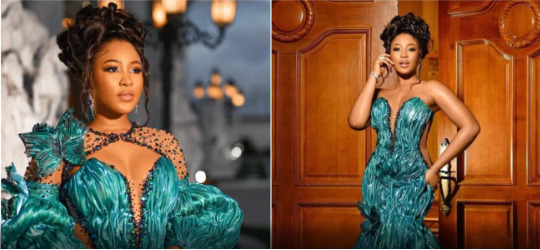
View On WordPress
#50 MILLION BRIDE PRICE#celebrity news#Erica Nlewedim#GOSSIP NEWS TODAY#NAIJA NEWS TODAY#NIGERIANS REACT
0 notes
Text
The Role of Seperatism in Female Liberation
Yes, seperatism will not end patriarchy. I have never seen any seperatist make that claim so I wonder why anti-seperatists like to point that out like their lives depend on it. Also, no singular act, outside of killing all males, can achieve that.
And yes, seperatism is often an individual action. Just like anti-beauty: not shaving, not wearing make up and heels, etc but we still understand that those acts of resistance, even though individual, have value and contribute positively to women and girls' wellbeing.
What seperatism does claim is that it protects women and girls' wellbeing by denying males access to them.
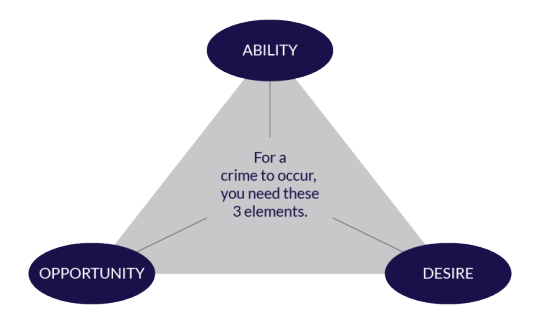

As seen in the images above, for [misogynistic] crimes to happen, all three elements: opportunity, desire and ability must be present and removing just one of them prevents crime. The images above apply to all crimes but since we are talking about female seperatism we can tailor it down to Gender Based Violence (GBV).
Seperatism is about preventing GBV by removing opportunity for harm. Individual seperatists can achieve personal safety in their homes while seperatist communities can achieve community wide safety. So when you claim seperatism is useless you are basically saying crime prevention efforts that focus on denying potential criminals the opportunity to commit crimes is useless. If that is your claim then you have to provide evidence of that.
Seperatists recognise that women cannot influence the ability and desire of males to harm females because behavioural change is self motivated so they focus on what they have control over which is the opportunity for harm.
Now are males, like all predators, going to seek new ways to gain opportunities to harm females, yes of course they are. Outside of GBV, criminals are always changing their strategies especially when their previous strategy becomes well known and people stop falling for it. Using cyber crime as an example because I am Nigerian (LOL), when people stopped falling for the destitute African Prince method, they changed to other methods like romance scams and blackmail. Criminals/Predators are always to seek new ways to catch their victims/prey which is the why the victims/prey must always be alert and aware of the criminals/predators methods so that they can protect themselves.
So yes, as long as men exist, they will be no feminist utopia where women and girls can exist without the threat of violence. We will always need to be on guard and strive to protect ourselves from them no matter the method they use.
Seperatism cannot save all women and girls in the world just like how crime prevention efforts in Ghana cannot save me in Nigeria and I shouldn't even be expecting it to because geography, language barrier, national laws, etc. What can be done is we adapt the methods used in Ghana to our local context and apply it to see results.
Seperatism is an elective individual and geographical community level action that has the potential to save all women and girls but nobody is kidnap unwilling people and hold them hostage.
And I know, someone is going to scream " VICTIM BLAMING" and to that I say, I don't care about being labelled a victim blamer. However, if you have another viable method for keeping women and girls safe, kindly put forward your idea so it can be evaluated. Please note if you suggest "educating men and boys", I will block you because I don't have the patience for that level of stupidity and delusion.
Sidenote:
I always wondered why allegedly smart women will "but child brides in Afghanistan" as a counter to female seperatism. The wins of feminism activism will always be limited by geography. There is no feminist activism that will impact the lives of ALL women and girls. An individual's or organisation's target populatin will be limited by geography and unfortunately by resources. You can't help everybody applies in feminism too.
Imagine if someone said that about abortion rights in the US. "Fighting for abortion in America doesn't help child brides in Afghanistan". Most people can see how ridiculous and frankly insulting it is to bring up that issue.
37 notes
·
View notes
Text

Hello everyone, it's time for a new book list! This month, I've made a list of books inspired by folklore. Hope you enjoy! I tried to include stories from different countries and cultures. As always, please be sure to vote using the link at the end of the post :)
Onto the books...
Gods of Jade and Shadow, by Silvia Moreno-Garcia

The Jazz Age is in full swing, but Casiopea Tun is too busy cleaning the floors of her wealthy grandfather’s house to listen to any fast tunes. Nevertheless, she dreams of a life far from her dusty small town in southern Mexico. A life she can call her own.
Yet this new life seems as distant as the stars, until the day she finds a curious wooden box in her grandfather’s room. She opens it—and accidentally frees the spirit of the Mayan god of death, who requests her help in recovering his throne from his treacherous brother. Failure will mean Casiopea’s demise, but success could make her dreams come true.
In the company of the strangely alluring god and armed with her wits, Casiopea begins an adventure that will take her on a cross-country odyssey from the jungles of Yucatán to the bright lights of Mexico City—and deep into the darkness of the Mayan underworld.
Deathless, by Catherynne M. Valente

Koschei the Deathless is to Russian folklore what devils or wicked witches are to European culture: a menacing, evil figure; the villain of countless stories which have been passed on through story and text for generations. But Koschei has never before been seen through the eyes of Catherynne Valente, whose modernized and transformed take on the legend brings the action to modern times, spanning many of the great developments of Russian history in the twentieth century.
Deathless, however, is no dry, historical tome: it lights up like fire as the young Marya Morevna transforms from a clever child of the revolution, to Koschei’s beautiful bride, to his eventual undoing. Along the way there are Stalinist house elves, magical quests, secrecy and bureaucracy, and games of lust and power. All told, Deathless is a collision of magical history and actual history, of revolution and mythology, of love and death, which will bring Russian myth back to life in a stunning new incarnation.
Things in Jars, by Jess Kidd
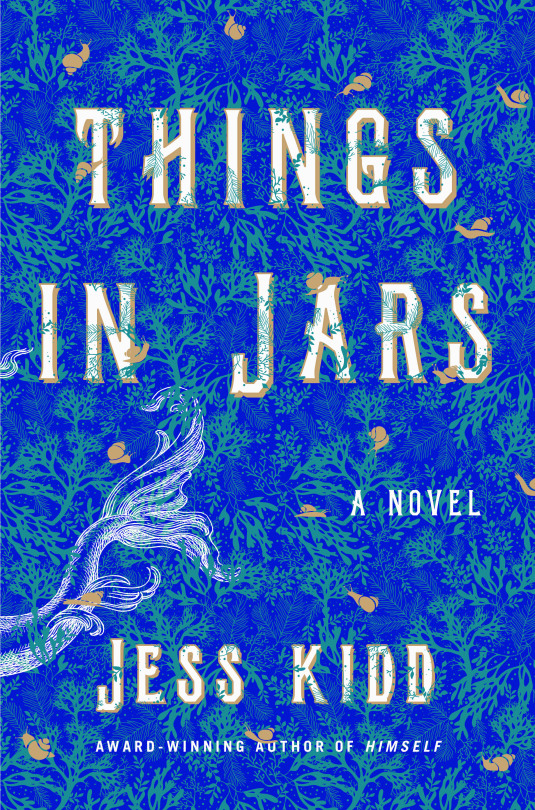
Bridie Devine, female detective extraordinaire, is confronted with the most baffling puzzle yet: the kidnapping of Christabel Berwick, secret daughter of Sir Edmund Athelstan Berwick, and a peculiar child whose reputed supernatural powers have captured the unwanted attention of collectors trading curiosities in this age of discovery.
Winding her way through the labyrinthine, sooty streets of Victorian London, Bridie won’t rest until she finds the young girl, even if it means unearthing a past that she’d rather keep buried. Luckily, her search is aided by an enchanting cast of characters, including a seven-foot tall housemaid; a melancholic, tattoo-covered ghost; and an avuncular apothecary. But secrets abound in this foggy underworld where spectacle is king and nothing is quite what it seems.
Blending darkness and light, history and folklore, Things in Jars is a spellbinding Gothic mystery that collapses the boundary between fact and fairy tale to stunning effect and explores what it means to be human in inhumane times.
Love in Colour: Mythical Tales from Around the World, Retold - by Bolu Babalola
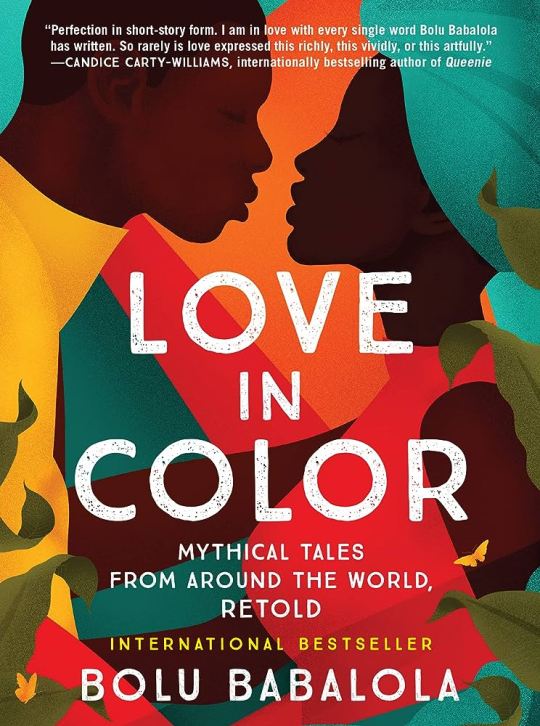
A high-born Nigerian goddess, who has been beaten down and unappreciated by her gregarious lover, longs to be truly seen.
A young businesswoman attempts a great leap in her company, and an even greater one in her love life.
A powerful Ghanaian spokeswoman is forced to decide whether she should uphold her family’s politics or be true to her heart.
In her debut collection, internationally acclaimed writer Bolu Babalola retells the most beautiful love stories from history and mythology with incredible new detail and vivacity. Focusing on the magical folktales of West Africa, Babalola also reimagines Greek myths, ancient legends from the Middle East, and stories from long-erased places.
With an eye towards decolonizing tropes inherent in our favorite tales of love, Babalola has created captivating stories that traverse across perspectives, continents, and genres.
A Master of Djinn, by P. Djèlí Clark
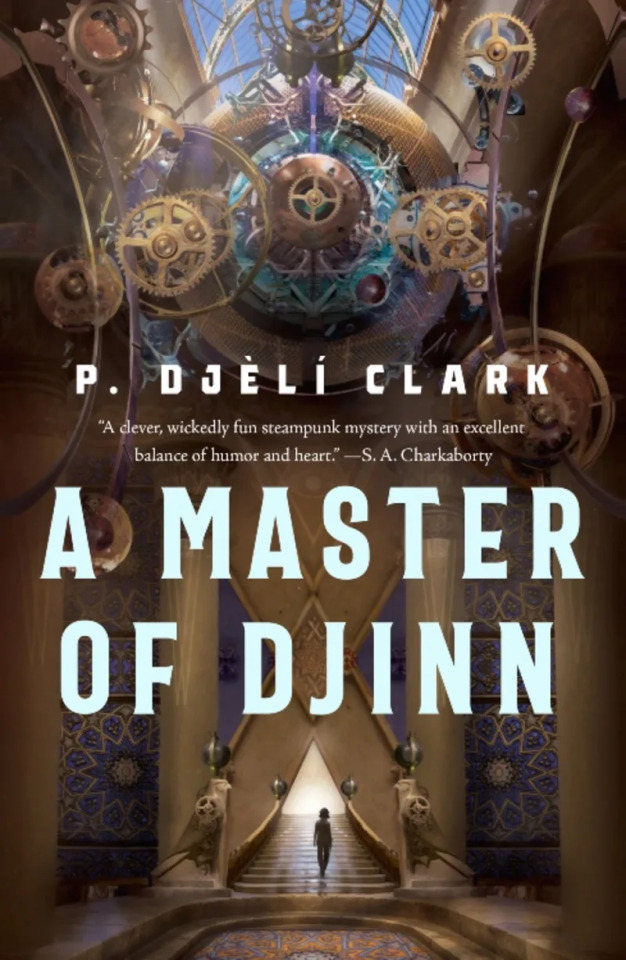
Cairo, 1912: Though Fatma el-Sha’arawi is the youngest woman working for the Ministry of Alchemy, Enchantments and Supernatural Entities, she’s certainly not a rookie, especially after preventing the destruction of the universe last summer.
So when someone murders a secret brotherhood dedicated to one of the most famous men in history, al-Jahiz, Agent Fatma is called onto the case. Al-Jahiz transformed the world 50 years ago when he opened up the veil between the magical and mundane realms, before vanishing into the unknown. This murderer claims to be al-Jahiz, returned to condemn the modern age for its social oppressions. His dangerous magical abilities instigate unrest in the streets of Cairo that threaten to spill over onto the global stage.
Alongside her Ministry colleagues and her clever girlfriend Siti, Agent Fatma must unravel the mystery behind this imposter to restore peace to the city -or face the possibility he could be exactly who he seems…
Please vote for our next book here.
43 notes
·
View notes
Text
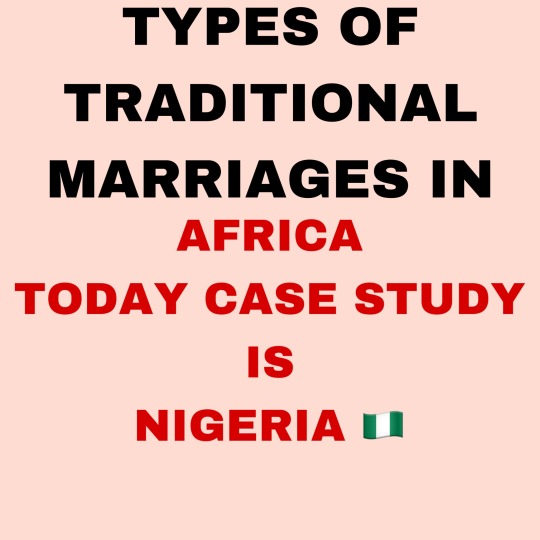
This is a message to my black brothers and sisters
Black history goes beyond slavery
You need to learn our cultures and traditions
Two major types of marriage exist in Nigeria: monogamy, a marriage of one man to one woman, and polygyny, a marriage of one man to two or more wives. In most cultural groups in Nigeria, traditional marriage is usually an arrangement between two families as opposed to an arrangement between two individuals. Accordingly, there is pressure on the bride and bridegroom to make the marriage work as any problem will usually affect both families and strain the otherwise cordial relationship between them. In most Nigerian cultures, the man usually pays the dowry or bride-price and is thus considered the head of the family. Adultery is acceptable for men, but forbidden for women. Marriage ceremonies vary among Nigerian cultures.
1 the ekpeye marriage
Bride price is paid in cash on every girl child before marriage is assumed to have taken place. This money is paid in stages and cannot be paid at once in one visit for several reasons. The first stage begins with the man and woman who after getting the approval of both parents, meet at the man’s best friend’s house for an initial introduction, which is called “Back Drink”. The bride will thereafter take the drink to her parents as a formal announcement of marriage.
The second stage is the “Front Drink” which is a bigger ceremony. In the past, this ceremony takes a whole day, but now modified to accommodate other issues in the marriage process. These issues include “Front Drink, Lineage Drink, Extended family Drink, Parents Bride Price, First Son’s bride price and the family bride price. These payments are done in segments. Although today, the issues listed are gradually being considered. There are other issues on the marriage such as cleaning of table, late coming, fixing of marriage date, service charge, etc. Some other amounts of money are paid in bits and segments, including drinks, snuffs, cigarette, etc before the final payment of “Head Money”, Ejie (2012). The head money is the most recognized and can be refunded in the case of divorce.
BRIDE EXCURSION
Payment of bride price ends with the family bride price. The groom’s wish determines the next line of action. If he wants a fanfare excursion, then another process begins. If he does not want any fanfare excursion, the bride is then allowed to formally depart and live with the husband.
Bride excursion is usually avoided in Ekpeye because of its high cost. The groom at this stage is required to settle for many other things for his wife to be escorted with gift items. However, there are compulsory gift items and non- compulsory items.
At the groom’s family house, a big ceremony is organized for the reception of the new bride and her entourage. These include young adult women, spinsters, and boys. After a day of this visit, they will all return back home, while at least seven spinsters will stay with the bride for another one week, helping her in customary domestic affairs.
. FAMILY INITIATION
This whole process of marriage makes you a man after initiation. Usually, you shall not be accepted for initiation if you have not paid the completed bride price.
Family initiation is a formal introduction of your wife to everybody in the lineage. Food and drinks are made available to groups in the lineage. These are men group, women group, youth group, boys, and girls and the children. Until every group has said they are satisfied, the ceremony cannot be over. A sign of acceptance is done by singing made in groups, especially the children group who shall raise a praise song in your name, Edema (2013).
When also these have been said and done, the couple shall be seated before the most elderly man and woman shall be seated for marriage blessings. This marriage blessing can be done traditionally or by prayers. Shortly after this special blessing, young men shall lift the man, while the woman shall be carried by women to their room. Both of them shall be locked-up in their bedroom where they shall remain until day-break. Their special assistants shall see to the end of the programme
2 Idoma marriage. The Idoma people live in central Nigeria, in the Benue State. The myth of their origin states that they are descended from the Zulu tribe of South Africa. They are mainly warriors. Some of their subgroups are the Adors, Otupas, Ogbanibos, Apas, Ofokanus and Owukpas. Marriage in Idoma land is considered a lifelong state, although divorce is possible on the grounds of A Nigerian bride and groom at their wedding ceremony.In most cultural groups in Nigeria, traditional marriage is an arrangement between two families rather than an arrangement between two individuals. KERSTIN GEIER/CORBIS adultery or other concrete reasons. When an Idoma man is at least twenty-five years old and has the financial and physical capacity to maintain a wife and children, he searches for and finds a woman of his choice, who is at least eighteen years old. He reports his findings to his family, which then chooses a go-between, a person who is familiar with the girl's family. The go-between investigates the family of the prospective bride to ascertain that the family has no history of mental disease, epilepsy, or similar problems. If the result of this investigation is positive, the prospective groom's family visits the woman's family with gifts of kola nut and hot drinks. After the first visit, another visit is scheduled for the woman to meet her future husband, after which a final visit is scheduled for the future groom and his family to pay the bride-price and offer other gifts. If the woman refuses to marry the man after these gifts have been provided, the groom's family keeps them
On the wedding day, in addition to the bride-price, the groom must pay a dowry first to the bride's mother and then another dowry to the father; this involves a significant amount of bargaining. Also every member of the bride's mother's family must be given money, with the groom's family determining the amount. The bride's age group and her more distant relatives also are given money, with the amount varying with level of the bride's education and productivity. Then the groom's family gives the bride a rooster and some money. If she accepts these gifts and gives them to her mother, she indicates her acceptance of the groom, but if she refuses, she signifies her refusal. If she accepts him, she is showered with gifts and money, and the two families eat and drink together. Before the bride is finally handed over to her husband, however, her age group will pose as a mock barrier to those who want to take her and extort money from the anxious groom's family. The bride's mother buys her cooking utensils and food because she is not expected to go to the market for the first five market days after her marriage. At the end of the eating and drinking, the wife is finally handed over to her husband's family.
Ideally the bride should be a virgin at marriage, which brings pride and joy to her family. If she is found not to be a virgin, she is taken to the husband's family' ancestral shrine for cleansing. After this the Ije is put on her to invoke fertility on her. This marks the beginning of married life among the Idoma tribe.
3 Marriage in Okrika land. Okrika is located in the eastern part of the Niger Delta of Nigeria, in the Rivers State. The Okrika clan is made up of nine major towns and more than fifteen villages.The fifteen villages are known as Iwoama (new towns). Okrika is the largest town with the largest population and is the administrative and traditional headquarters of the clan. In the Wakirike area, there are two main types of marriages—the Ya or Iyaye and the Igwa.
The Ya marriage ceremony involves certain customary functions that precede the consummation of the marriage. Here the bride and groom must come from the same tribe. When the husband is ready, members of the family assemble for the essential marriage rites, including the tying of the knot. The man is required to produce three to five pieces of kano cloth or Ikpo, one piece of real India cloth, or injiri, four yards of raffia palm cloth sewn together (okuru), and another separate yard of the same material. If the husband is wealthy, he adds additional kinds of cloth. He also provides three or four large pots of palm wine and twenty-two or twenty-four manila. These offerings are placed in the shrine of the family ancestors, and an elderly person in the family takes up the single yard of raffia cloth and ties the knot. The husband and wife stand before the shrine, side by side. The elder then ties the raffia cloth round the waist of the wife seven times, each time uttering some words that invoke blessings on the couple. Palm wine is poured into a drinking cup, and the bride and groom drink from it simultaneously. The knot has thus been tied, and divorce becomes virtually impossible. The single yard of raffia cloth is the essential thing to make the marriage binding. In case of unavoidable divorce as aresult of adultery on the woman's part, the parents of the wife are bound to return double the cumulative expenses of the husband.
The second system, Igwa, means mixed; the woman and the man may marry even though they are from different families. A woman married under the Ya system can be married under Igwa if the Ya husband is not living with her as husband and wife under the same roof. All offspring of this second marriage belong not to the biological father but to the Ya husband, who by custom is regarded as their legal father. If the woman has not been previously married to any man under the Ya system, children from the Igwa marriage belong either to the lawful husband of the wife's mother or to her brothers. However, the once unchangeable custom of the possession of children born under the Igwa system of marriage is relaxing under the pressure of modern times. Many adult men and young people engage in Igwa marriage if their previous marriage produced no children
4 Marriage among the Ibos. The Ibos are a very class-conscious group. They have a caste system and encourage endogamy. In the Ibo society, the castes include the Nwadiani, who are the upper caste of freeborn and land owners, and the Osu, who are the lower caste and descendants of former slaves. In the past, the Osu were used in human sacrifices. (Though the Osus are no longer slaves, yet they are still discriminated against by the free-born, who will usually oppose any of their children marrying an Osu.)
Within the Nwadiani are three groups:
The freeborn, who are able to trace their lineage to the founder of a segment of the community.
The Omoru, whose ancestors came from elsewhere to settle and become attached to the founder of the community. Their descendants are accepted as full members of the village or town because of their freeborn status in their place of origin.
The descendants of the autonomous groups who lived in the area before the founders of the state arrived and incorporated them into the structure of the community, which they established.
Intermarriage among Nwadiani has united these three categories in a closely knit kinship system. All the lineages in the village were believed to have descended from one ancestor or the other. Kinship links were sometimes invoked to create special relationships with neighboring village groups or village. Owing to their close kinship ties, men had to find their wives outside the village. One kind of link is between villages and village groups. Villages in a group, as well as neighboring villages, were linked by bonds forged by marriage alliances.
Endogamous marriage seemed to have served to perpetuate the Osu status, which is inferior. At Oguta, Osomari, Onitsha, and Abo, Osu could only marry an Osu because of their outcast status. They are thus despised by the freeborn. This discrimination was carried further at Osamari where the Osu class had their exclusive residential quarters (ebo) in each division. This also gave the servile quarters a sense of corporate solidarity in opposition to the "Freeborn" quarters. Through the intermarriage between members of different Ogbe, Ebo and the Osu of a community they have developed a web of kinship similar to that, which characterizes the Nwadiani. However, permitted intermarriage between Osu and Nwadianins and children born of such mixed marriages are allowed to have the status of Nwadiani. (Note that though this caste system is historical, the descendants of these castes have inherited their ancestors' classes and are therefore stratified along that line even today.)
Marriage ceremonies in traditional Ibo society are elaborate affairs celebrated with much fanfare and merriment. The couple must have had some period of courtship during which the prospective groom informs his parents of his intention to take a woman of a certain village as wife. The parent of his intended wife must be known to his parents, and the courtship requires the prospective bride to pay at least one courtesy call on her potential inlaws to enable them to get to know her. After getting acquainted with the woman, the parents of the bridegroom will give their approval if they are satisfied that their prospective daughter-in-law has an unblemished reputation. Such courtships usually become public knowledge. The day of the marriage must be mutually agreed upon by both families (Omokhodion 1998).
37 notes
·
View notes
Text
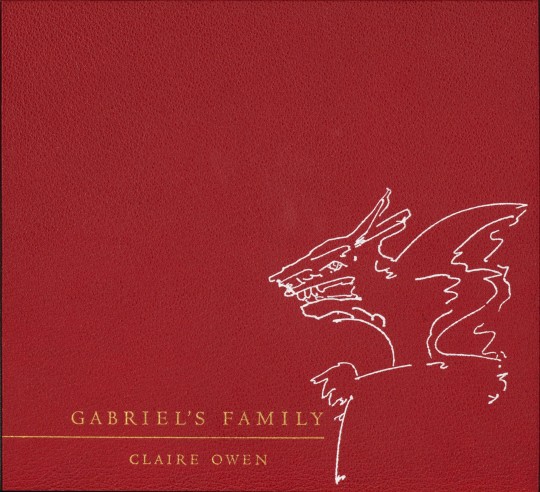

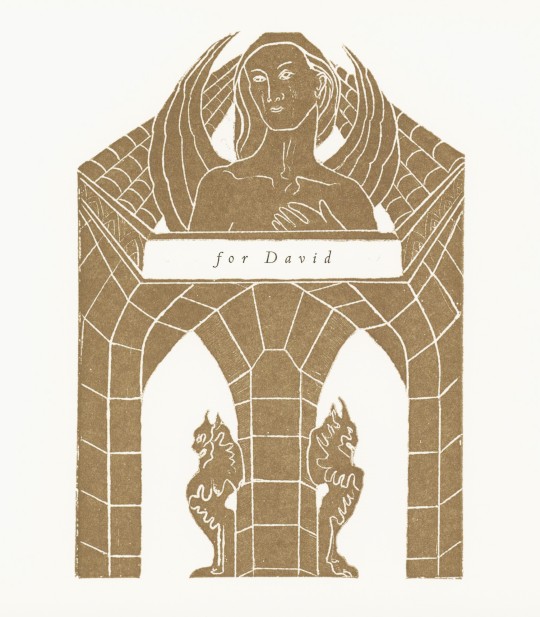
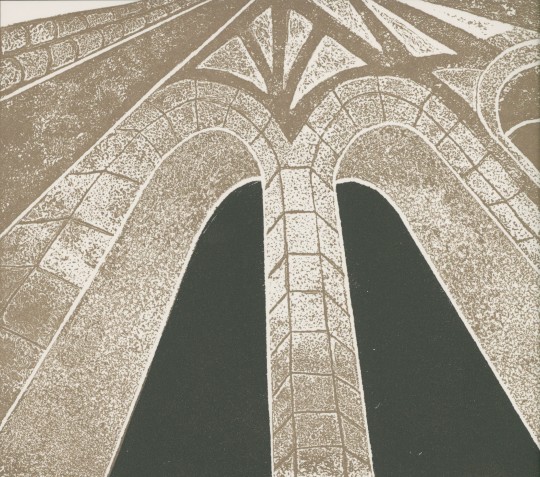


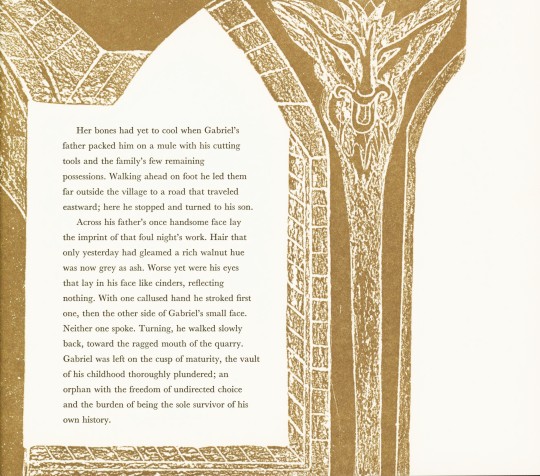
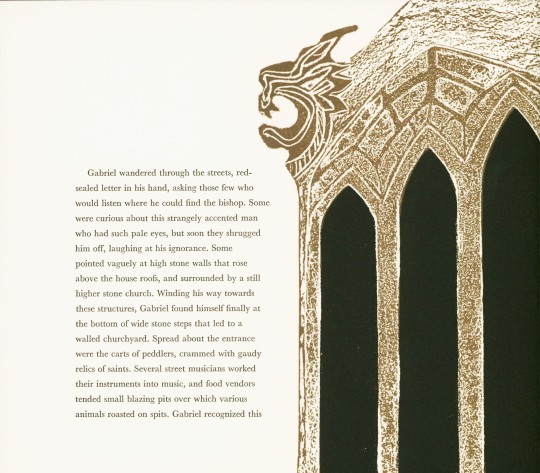

It's Fine Press Friday!
This week’s Fine Press Friday highlights another book from the estate of our late friend Dennis Bayuzick. Gabriel’s Family was created by Philadelphia artist and poet Claire Owen in 1992 at her Turtle Island Press in an edition of 52 copies signed by Owen and her collaborator Daniel Tucker. It tells the story of a stone cutter who creates beautiful, but grotesque creatures and eventually believes them to be a part of his family and a completion of himself. His solitude, however, is threatened by being evicted by the bishop, and events unfold from this predicament.
The images are relief etchings prints created by Owen herself. The presswork is by Art Larson of Horton Tank Graphics, in Hadley, Massachusetts. The text is set in Baskerville and the titling is done in Centaur. The book was bound in red Nigerian goatskin, with a brown spine, stamped in gold and white foil, by Daniel Kelm at Wide Awake Garage in Easthampton, Massachusetts. The story was originally published in The Painted Bride Quarterly of Philadelphia in fall of 1991.
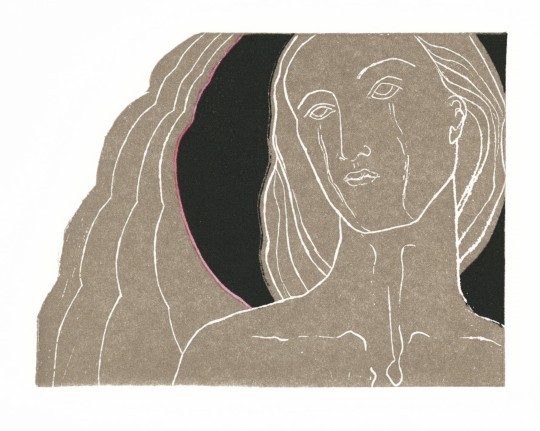


View other books from the collection of Dennis Bayuzick.
View more Fine Press Friday Posts.
– Sarah S., Special Collections Graduate Intern
#Fine Press Friday#fine press fridays#Dennis Bayuzick#Claire Owen#Turtle Island Press#Daniel Tucker#Art Larson#Horton Tank Graphics#Baskerville#Centaur#Daniel Kelm#Wide Awake Garage#The Painted Bride Quarterly#fine press printing#fine press books#fine press publishing#relief etching#etching#Sarah S.
26 notes
·
View notes
Text
some notes on how i've been running the brides
when i first set out to dm cos, one of the first things i was really determined to do was give them more in-depth backstories, since— with the exception of escher getting like one paragraph lol— they're basically just. creepy dolls. which i GUESS works with gothic horror but man i would really like to have female characters with personalities!!!!
*combination of my own interpretation as well as concepts ive integrated from other dms, so if you recognize something specific i probably got it from elsewhere
ludmilla vilisevic
physically in her mid-30s, and is aged roughly 230. i play her with an rp english accent, although in my mind she has a nigerian affect. she is very poised and calculating, and always tries to be the one in control of any situation. has a talent for shadow magic, and her own sentient shadow is the closest she has to a best friend. she also has a barn owl familiar named amicus and a cat named eupraxia. when she takes a human disguise, she goes by the name of filena voltanescu.
before ludmilla married strahd, her name was lumina. she is a wizard apprentice who was lost in the mists and stumbled into barovia. naturally very curious, brave and shrewd, she marched up to ravenloft despite all the warnings. her and strahd ended up having a very romantic relationship (despite lowkey reflags from strahd the whole time lol) for a long time since there had been a long spell of no tatyana reincarnation, although they eventually began to fall apart, partially spurred by her feelings of isolation and longing for her family outside of barovia.
at the point that cos takes place, ludmilla is very distant from strahd and is really only going through the motions/trying to stay useful, though she is determined to remain a step above his other partners in terms of superiority. she spends a great deal of her time researching and experimenting on mostly-unwilling test subjects (she is well aware at this point that what she is doing is cruel, but after two centuries she's become rather indifferent). she's very fascinated by the abbot's work.
in my game, strahd has given her emil toranescu, who is imprisoned in tsolenka pass. she is working on developing a method to transfer souls from one body to another— in my game, ismark is the true reincarnation of tatyana, and ireena merely looks like her.
anastrasya "anya" karelova
physically in her early 30s, anya is just over a century old. barovian accent, and extremely flamboyant and charismatic, she loves being the centre of attention. she has a natural talent for communicating with ghosts, who are often her captive audience. not much combat skill beyond what abilities she has as a vampire, but she has a wicked skill for charming people. in human disguise, she goes by ekaterina bogdana.
anya is from minor vallakian nobility, which comes with all the trappings of petty inter-family squabbles. she has had a terribly unfortunate string of bad luck with marriages, all of her betrotheds have met poor fates or ran off. on a fourth attempt, her parents arranged for her to be married to an older landowner who she did not care for at all.
while she was engaged, anya ran into ludmilla (in human disguise) by chance. they grew close quickly and began having an affair. eventually, ludmilla introduced her to strahd, and she was instantly enamoured. before the wedding, anastrasya's betrothed "mysteriously" died, and she was whisked away to ravenloft. at this point, ludmilla and strahd's relationship was very cold, and he became preoccupied with anya.
volenta popofska
physically in her mid-20s, and is about 65 years old. barovian, and has a very floaty and whimsical way of speaking, though very soft spoken and rather self conscious. she often comes off as eerie. her vampiric abilities are amplified, making her a very good rogue/assassin. in "human" disguise, she is called violet spivakhofska.
volenta is a tiefling who was born in a small fishing village on lake zarovich. her parents did not want her, and so she was raised by the village elder. when she passed away when volenta was a teenager, she no longer had any protection from the animosity of the villagers, so she fled. eventually she was picked up by a small group of bandits, who would've attacked her, but she convinced them to let her join.
she bounced around various groups of bandits and thieves for several years, finding a place but never truly fitting in. after one traumatic rejection, she went to ravenloft in search of strahd, who she had heard stories of since she was a child, and had often wished would come and take her away. to volenta's joy, strahd took a liking to her and made her his bride.
even still, volenta is an outcast due to her awkward and sometimes unsettling behaviour and knack for the macabre. strahd enjoys her, but does little to try and ingratiate her with his other partners, and so she remains self-conscious and eager to win his favour.
escher gerst
physically in his late twenties, escher has been a vampire for just over a decade. i play him with a german accent. he is usually very distant and melancholy, though he becomes much more playful when not around strahd. a bard by trade, as a vampire he discovers a natural aptitude for shapeshifting, spurred by a bit of neuroticism over not being able to see his own reflection. in human disguise, he goes by claudius belasco.
escher is also from outside the mists, the son of poor farmers who ran off to join a bard troupe. he loves stories and music, and has a knack for various instruments, but particularly enjoys the lute and the violin— strahd has gifted him two exquisite models. his troupe was caught in the mists, and unbeknownst to him, strahd began spying on them. outside the village of barovia in the svalich woods, strange orchestrated a wolf attack on the group, sparing escher so that he could swoop in and save him. when escher awoke in a plush bed in ravenloft, he became deeply enamoured with strahd, who he saw as a fairytale prince. they had a very passionate relationship with strahd lavishing many gifts on escher before convincing him to let him turn him into a vampire.
despite not being together long, however, strahd has quickly become rather bored of escher's antics, who became desperate to stay in his good graces to avoid being sealed into the crypts. after the revolt in the village of barovia, strahd took doru as a vampire spawn. escher and him would have been close friends, if escher wasn't so deeply self-conscious and paranoid over his own status. eventually, he convinced strahd to starve doru to the point of madness and return him to his father at the church. escher would feel guilty over this, were he not so deeply concerned over his own self-preservation.
also due to strahd's coldness toward him, escher developed a fascination with vallaki, where he often goes in human disguise. here, he took a human lover, a painter named anton. anton became involved with the feast of saint andral, when escher gave him a bag (secretly containing the bones) and had him deliver it to the coffin shop. during the chaos of the feast, unfortunately, strahd had anton killed— escher beseeched the party to bury him properly and behead him so he would not return as a vampire spawn.
#curse of strahd#my stuff#i will probably have to edit this later Lol unfortunately trying to edit on tumblr mobile is like scraping plastic off a frying pan#also one of my players wrote a very wonderful ludmilla/strahd story that i hope they'll publish on ao3#ive also written a ~5k drabble about escher and started two for anya and volenta that i have not finished#anyway overall i hope it's quite clear that the brides are all indivuals who are very lonely/crave affection and fear punishment which#informs a lot of their behaviour
20 notes
·
View notes
Text
Book Review 19 – All The Names They Used For God by Anjali Sachdeva

This is the second short story collection I’ve read this year, and of the two the only one that was really trying to be a coherent work in its own right and not just a grab bag of smaller pieces. I actually picked it up entirely off of a tumblr post, of all things – there was an excerpt from the story Killer of Kings that really got stuck in my head, and having read it I just needed to see the context and the rest of the work it was from. So, score one for viral word of mouth advertising I guess.
Killer of Kings – about the writing from Paradise Lost, from the perspective of Milton’s politically unreliable angelic muse – is absolutely the best story in the book, but there weren’t really any that struck me as bad. The overall tone is kind of dreaamlike – mythological, or in many cases the kind of story you’d expect to hear on a weird fiction podcast (if a very literary one). High on the uncanny and numinous, on weird situations and the touch of something transcendent, and just on people being put in situations. Low on high action, or really tension or plot at all – the narration usually feels like it’s at a bit of a remove, or if not then like one is observing the inevitable machinery of fate more than anything to really get excited about and caught up in. Dreams or fables, or something in between.
The writing is good enough to generally make the remove work, I think. Beautiful imagery in a lot of places, and very distinct (if occasionally pretty broad) voices for the points of view of all the different stories. Call prose lyrical is essentially just a buzzword at this point, but I think these mostly qualify.
There are nine stories in the book, and aside from the aforementioned fairy tale about regicide and mutinous angels, I’m afraid that I remember absolutely none of their titles. Or, no, that is a lie – the story about a pair of Nigerian girls abducted as brides by Boko Haram who escape after learning how to magically compel and dominate their husbands shares All The Names They Used For God with the whole collection, so I do remember that one. The other stories that really stuck in my head were of an albino homesteader in the Ozarks abandoning the farmhouse to explore and lose herself in the labyrinthine cave system she discovers, the modern day sailor in a dying fishing village becoming enraptured with the mermaid he glimpses as the ship he works gluts itself on the bounty of fishes she has called to feed the shark she’s become fascinated by herself, and the near-future story of identical septuplets created by their geneticist parents who are each struck by accident or disease as they go through adolescence and increasingly haunt their surviving, doomed siblings. (They’re all like that).
So clearly the plots and settings vary pretty wildly, but I do mean it when I say that the book was the most cohesive set of short stories on an artistic or thematic level I’ve read in quite a long time. Every story in the book (I’m pretty sure, at least) has a real sense of some vast and unseen mechanism of the universe brushing up against the mundane world, some intrusion of something grand and overwhelming and uncanny into the protagonist’s life. (It’s the title, after all – ‘God’ in a broad, rather pentheistic sense, but still, the glorious and uncaring clockwork behind the curtain.) And the culmination of each story is the protagonist (not always the point of view, but the character actually driving the plot) in one sense or another succumbing to the unknown, abandoning what they have and take a leap of faith into some transcendent self-destruction.
All to say the collection really works as a whole more than the individual stories do on their own. Which is probably entirely normal for short story collections that aren’t pulled together based on being based on the same property or written by the same author without much curation otherwise, but I really don’t read many of those that are also actually good.
22 notes
·
View notes
Text
A LITERARY MASTERPIECE : DISCOVERING NEVER TO LOVE AGAIN

A unique story which transcends between friendship, love, hope and uncertainties that accompany the journey of an average Nigerian girl and her struggle to keep her commitment to the love of her life. This literal work of art, written and published in 2004 by American based Nigerian author Ngozi Onyegbule has its setting in two very contrasting places : A small intimate town in the Eastern Nigeria , and United States of America. In this novel of 18 chapters, Onyegbule, was able to deliver an African fiction in English, that promotes the culture and tradition of Nigeria just like some remarkable diaspora Nigerian based authors; the likes of Buchi Emecheta and a few others. As its name depicts , this is a story of a vow made from experiencing the rough side of westernization.

SUMMARY
Never to Love Again is a fictional story that centers on a young beautiful girl by name SYBIL AFOR, who falls in love with a promising young teacher KENNETH NKWO. Sybil, the last child of her strict and disciplined parents, gets into a committed relationship with Kenneth: the handsome, sweet and caring part time soap supplier of her mother.
These two characters go through several phases to keep their relationship glued in hope to get married someday. Their many years of friendship and commitment is thrown into new and complex trials which comes with Sybil’s move to further her study abroad. Though a struggling and underpaid young teacher, Kenneth quiets his plans to study law abroad, and channels his finances and energy, to complete the traditional marriage rites for his soon-to-be bride, and also reward her with a rich send-off party.
Sybil arrives the western soil, and is faced with pressure from her sister, college roommate, and the environment around her to follow the path she has ventured into: coming to America, and forget about the old path : Kenneth and their commitment. After much thinking and deliberation, Sybil drops the bombshell of breakup on Kenneth by letter, who receives it with shock and horror. Karma strikes the face of Sybil as she is asked to leave her school and the country after she was found ineligible to matriculate. Meanwhile on the other side of the world, Kenneth prepares to leave his home country, to study law. This leaves a heartbroken and deported Sybil in regret. But alas! a ray of hope appears for their relationship as Sybil receives admission from another school to start over again. Though the novel ended in a declined mood, there seems to be a sunrise to their relationship in the sequel “LOVE FORGIVES ALL SINS”
THEME: The novel has various themes laced in it, which would be of great interest to diverse readers. Some dominant themes are : Love, Peer-pressure, Doggedness, Respect, Cultural practices. And some sub-themes like : Independency, Friendship, Discipline, Courage, Fear, Early Detection can also been found. With makes it a jungle of many emotions and thoughts.
SETTING: Employing different places and cultures, the general setting of the novel is the late 20th and early 21st century. The movement of the characters also juggle from the western setting to the Nigerian setting.
PLOT: The plot, which is very much arranged and beautifully intertwined, graduates into the themes, characters and setting. So it’s safe to say that the plot is well planned.

ANALYSIS
CHARACTER DEVELOPMENT: The rise and use of each character, shows that the author, carefully thought of each one, and their role-play before infusing them to the plot. The main/ round characters which are Sybil, and Kenneth,touched every aspect of their role with precise and accurate details. There are some stoic and flat characters who played their role perfectly without absorbing change like : Victoria Sybil’s sister, Rosario Perez, Anthony, Bethrand and host of others.
LANGUAGE AND WRITING STYLE : The author employs the use of Narrative and Descriptive style to tell this story. The use of figure of speech is also dominant, and it can be seen is some examples like :
“one hundred feet long” ( line 3,page 124) which is used to describe the veil of a bride.
“All hands were on deck” (line 2,page 122)
“Marching to the altar” ( line line 5,page 119)
“Small lord” ( page 101) .
The author also makes use of the Omniscient point of view style to illustrate the various aspects of the book.
STRENGTHS: The greatest strength of Never too Love Again, is its accuracy and powerful illustrations of the people’s cultural practices, the different ways people see or accept the cultural practice amongst them. The fact that a lot of people would be able to relate to this story because of its authenticity and it vibe, is a major strength of this book.
When you line the background and personality of the author with his fictional work of art, you would see that the author has had ample experience of both cultures, so it’s safe to say he knows what he is writing about.
WEAKNESS: The dominant weakness of this book, it’s in its typesetting. The absence of quotation marks in this book, is what makes it weak. This makes it harder for readers to differentiate between the characters speech from normal writing. This is a major weakness because it would take a longer process to read and accumulate.
IMPACT: Never to love again, has recorded significant progress and awards in United States, due to the diasporic nature of the author. But discoveries that are about to be made about this novel, would soon throw it into National archives and collections.

CONCLUSION
My dear book readers and lovers, you just have to add “Never to Love Again” to your TR ( To Read ) list, because a journey through the cultural display and the rollercoaster emotions in this novel, is worth every glance. Remember, be patient and make sure you savor each chapters essence.
I wish you a lovely read,
@omalichathewriter

5 notes
·
View notes